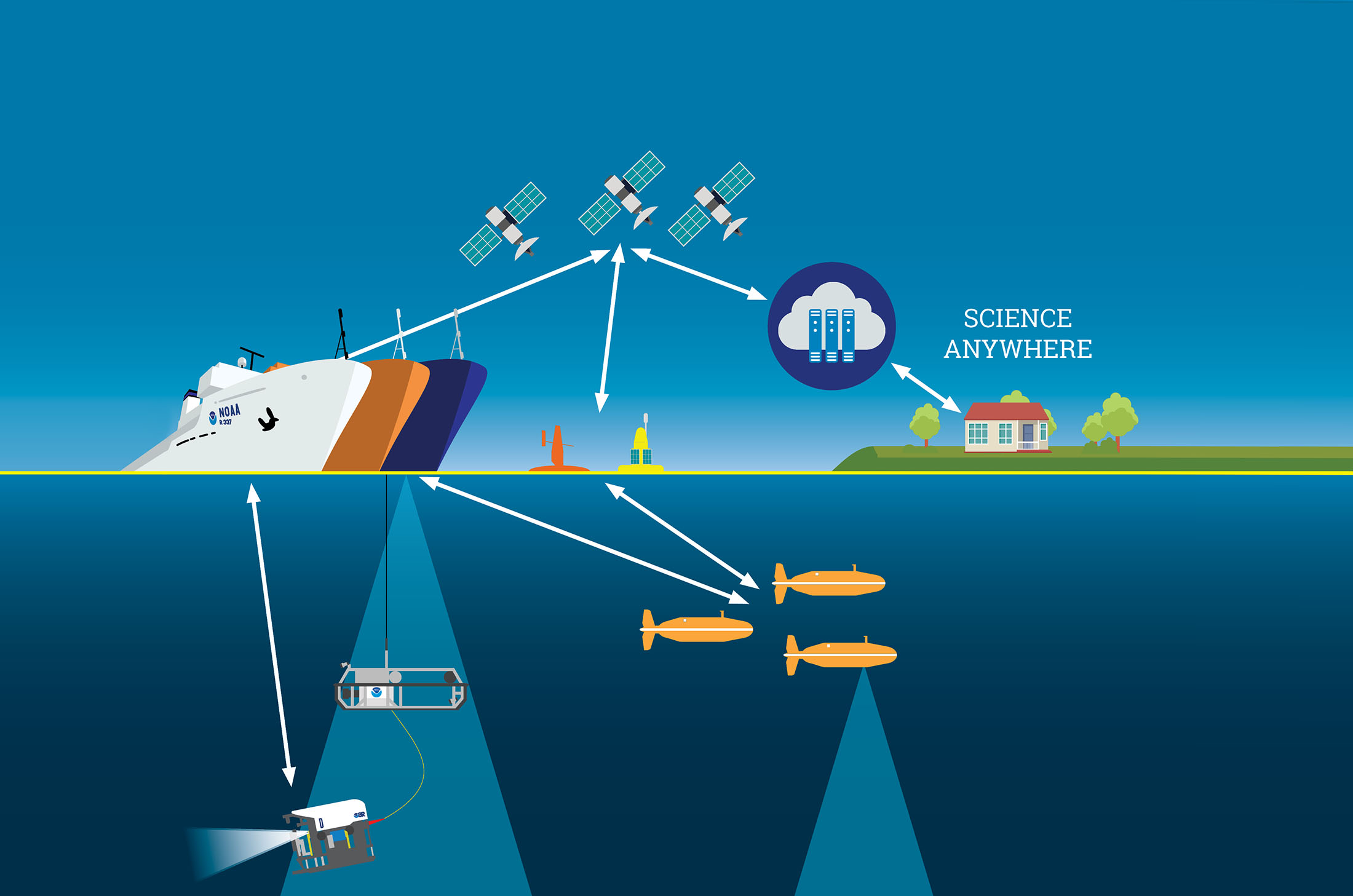Published on
Author
In an essay that appeared in the Journal of Ocean Technology, Volume 15 Number 4, “Sailing into the 21st Century,” Rear Admiral Tim Gallaudet et al. discuss how the National Oceanic and Atmospheric Administration (NOAA) is using autonomous platforms like the Saildrone Explorer, artificial intelligence, and telepresence to achieve ocean science objectives during the COVID-19 pandemic, and how these technologies are transforming future ship design.
The Saildrone Explorer is one of several platforms that were leveraged by NOAA to continue in situ data collection throughout the spring and summer after ship-based surveys in the Arctic were canceled due to travel restrictions.
“The onset of the COVID-19 pandemic in the spring of 2020 disrupted much of NOAA’s field science and research operations to an unprecedented degree. NOAA scientists and engineers acted quickly, mobilizing available uncrewed systems to mitigate impacts to operations and ensure the timely delivery of critical data and services. In Alaska, Saildrone uncrewed surface vessels were deployed to support stock assessments for Pollock—the nation’s largest fishery by volume—and to produce updated nautical charts ensuring safe passage of commercial vessels along the North Slope,” the authors wrote.
NOAA scientists and engineers have been experimenting with various robotic and autonomous platforms for decades, and indeed, have contributed to the development of various capabilities of the Saildrone platform, for example, integrating NOAA Pacific Marine Environmental Laboratory (PMEL)’s ASVCO2 sensor onto the Saildrone Explorer to collect in situ observations about air-sea carbon dioxide fluxes in remote areas of the ocean. Last summer, NOAA’s Atlantic Oceanographic and Meteorological Laboratory (AOML) and the Marine Biodiversity Observation Network (MBON) collaborated with the Monterey Bay Aquarium Research Institute (MBARI) to use autonomous underwater vehicles to collect echo sounder observations and samples of environmental DNA (eDNA) to study anchovy off the coast of California. Saildrone is also working with MBARI to integrate eDNA capabilities into the new 72-foot Surveyor.
The examples above and “other NOAA [unmanned systems] projects activated in response to COVID-19, demonstrate how unique public-private partnerships can quickly pivot in a crisis to support NOAA’s science priorities when traditional methods are not possible,” wrote the article authors.
Previously, only a limited number of people could go to sea on ship-based surveys, often spending months away from home in remote and dangerous locations. Autonomous and remotely operated platforms combined with satellite communications have made telepresence an important tool for ocean exploration, greatly increasing participation and collaboration across organizations:
The essay's authors say that with "the cost of satellite bandwidth decreasing, and the demand for it increasing, the protocols established by NOAA and its partners through hundreds of telepresence-enabled expeditions will be adopted across the US scientific fleet to maximize expedition value during and long after the COVID-19 pandemic.”
Read the full article: Autonomy, Artificial Intelligence, and Telepresence: Advancing Ocean Science at Sea in the COVID-19 Era
Resources
NOAA Research Council, “NOAA Uncrewed Systems Strategic Plan 2021–2025,” January 19, 2021


















